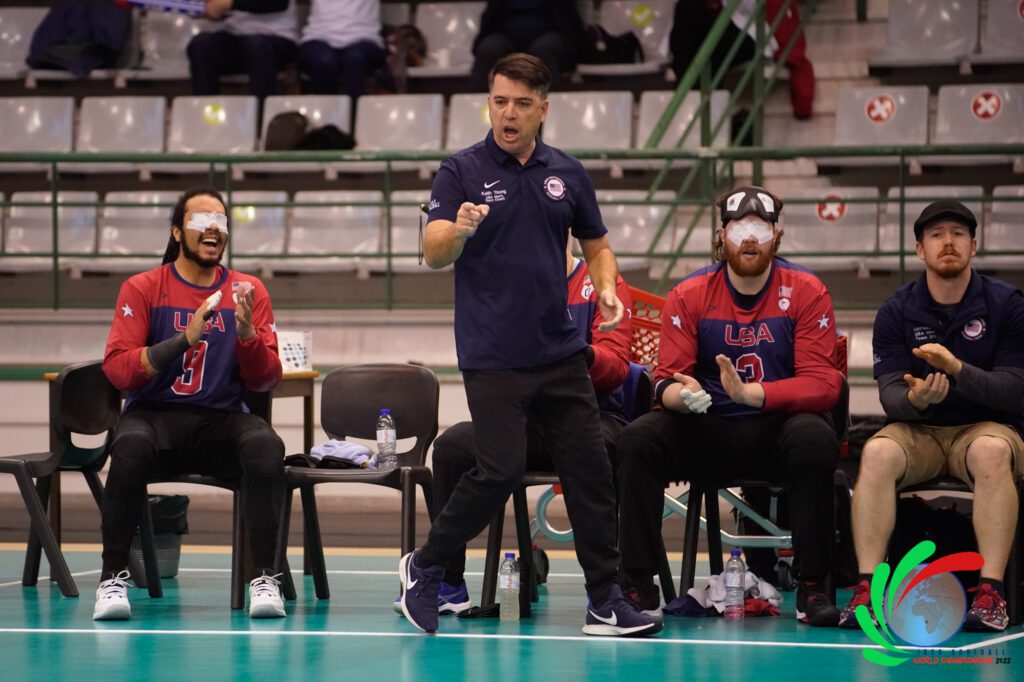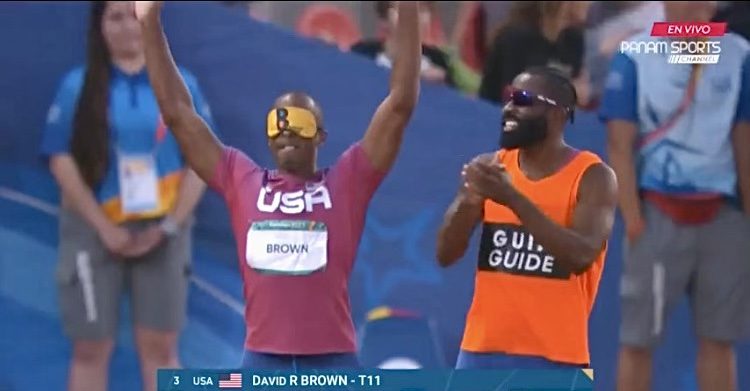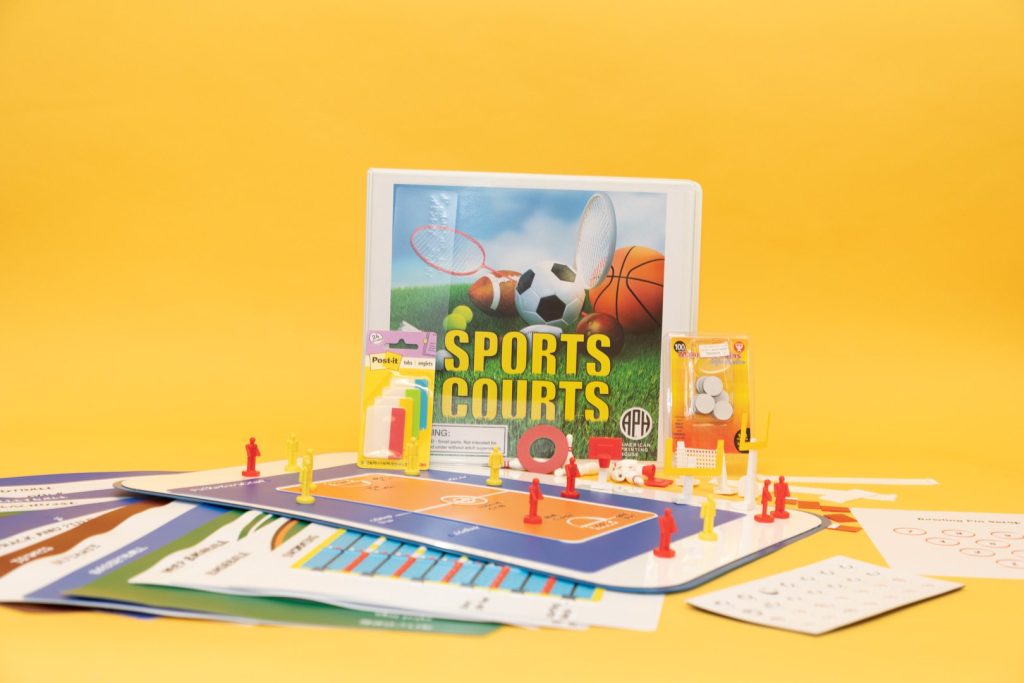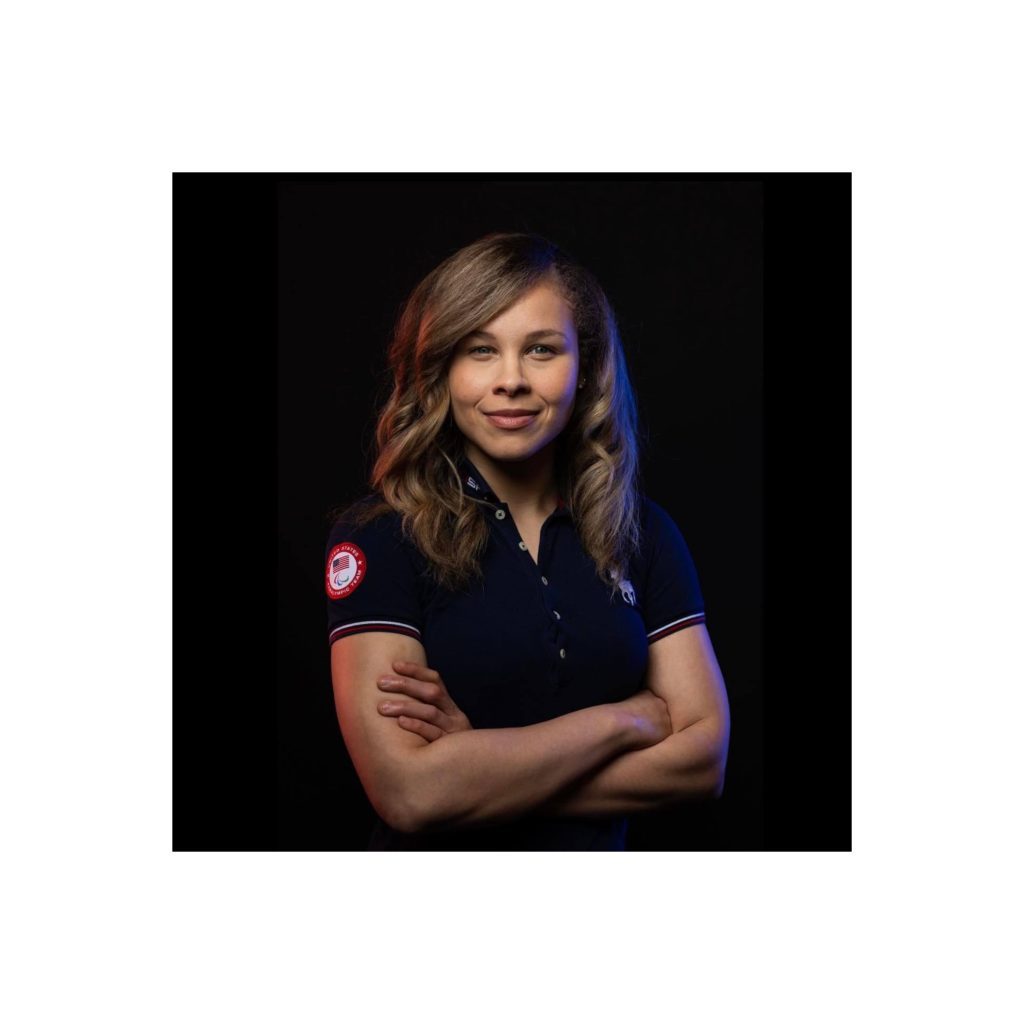To ensure gift delivery by 12/25, please place orders via UPS shipping no later than 12/17.
CloseExploring the World of Adapted Physical Education: Enhancing Inclusivity for Blind and Visually Impaired Students: Paralympic Sport Training and Inclusion

Whether they are going for the gold on a court, field, or in a pool, athletes push themselves to be their best. By introducing students who are blind or low vision to Paralympic sports in physical education class, teachers show their students that it’s possible for them to make sports their career, too. Coach Keith Young holds the Paralympic Challenge for middle school students at the Florida School for the Deaf and the Blind (FSDB) for this very reason. He shared with us what this curriculum entails and how teachers can also include Paralympic sports in their P.E. classes.
Meet Keith
Since 2009, Keith has worked as a physical education teacher at the Florida School for the Deaf and the Blind (FSDB). In 2015, he became FSDB’s boys’ goalball team coach and the USA Youth Boys National Goalball Team Head Coach. In 2019, Keith also took on the role of head coach for the USA Men’s National Goalball Team.
The Paralympic Challenge
The Paralympic Challenge is a year-long physical education class for students in grades 6-8 at FSDB. The event includes month-long action units on goalball, blind soccer, swimming, track and field, and archery. “At the end of the year, we do a week of skill events for each sport with our boy and girl divisions. It’s their version of a middle school field day that lasts six weeks,” Keith said. “For our students who struggle with swimming, we’ll use the lane line that they’ll straddle, and they’ll pull hand over hand.” Examples of skill events include: a goalball throwing challenge, hitting a target in archery (with staff assistance drawing the bow if needed), kicking for accuracy and kicking for distance in blind soccer, and a 25-meter freestyle in swimming. The track and field events are a 100-meter dash, the long jump, and the high jump. After the competition, there is an awards ceremony.
Strategies for Teaching Paralympic Sports
During every unit of the Paralympic Challenge, Keith covers the history, goals, and objectives of each sport while orienting students to the court or pool layout. Expressive and receptive communication are key when learning the fundamentals of sports. “I can say, ‘Hey, I’m going to pass it to you,’ but if you don’t respond to me and if I just go ahead and pass it, how do I know it’s going to get to you? Or how do I know that you are paying attention?” asks Keith. When teaching goalball, Keith will show the students how to block and throw. “We’ll start doing coach lead where we’ll roll the ball slowly and get them practicing blocking, then transition to passing and throwing, where the staff is supporting the students.” This way, the students learn slowly before Keith increases the speed.
Another technique Keith uses is starting with the end first. If talking about rolling a goalball, he’s focusing on the release, which should be down low with fingers down. Otherwise, you might get a highball. For example, with blocking, from ready position down to the block, some people’s ready position or how they block might be a little bit different, but no matter what, they know how it feels at the end. “We get them to understand this is where I need to be at the end of this technique.”
Other important teaching strategies to utilize across all sports, include:
- Observing students maneuver in the class so a teacher can tailor their teaching to them.
- Using a different tone of voice for coaching, teaching, conversation, etc.
- Having a continuity of terms across all sports (e.g., “load the arm well” for a backswing and overhand throw)
- Verbal descriptions
- Tactile modeling
- Physical guidance
- Using the OODA loop in sports (observe, orientate, decide, act) for each play
- Encouraging self-talk (reminding yourself to stand feet shoulder-width apart or telling yourself you can do this sport)
Key Benefits of Paralympic Sport Training
There are three benefits of incorporating Paralympic sports into the P.E. curriculum.
First, by learning about other Paralympians, students understand that they can be a professional athlete, too. Second, it’s important to introduce sports at a young age so athletes can begin playing. Lastly, Keith said, “When you have lofty goals and objectives and you are part of something bigger than yourself, if you honestly pursue it, whether you attain it or not, the biproduct is you becoming a better person, and taking those experiences, those skills, and applying it to your life off the court for the rest of your life. I hope other schools for the blind and other P.E. teachers who have students who are blind and visually impaired can do units like mine. They can make it smaller to where they’re doing things, not only for that student, but for their peers, too.”
A Long-Lasting Legacy
Through doing the Paralympic Challenge at FSDB, Keith taught his students to leave a legacy behind. This legacy was not about winning; it was about focusing on the moment and playing together. This creates camaraderie among teammates. Keith also encouraged the older athletes to mentor the younger ones and watch as they improved. Keith said, “Through time and history, the people behind you are not going to remember you for what you’ve accomplished. They’re going to remember you by your interactions with them.”
For more resources, visit the U.S. Association of Blind Athletes YouTube channel playlists on goalball training videos and blind soccer instructional videos.
APH recently released a new product, SPORTS COURTS, to help children who are blind or low vision better understand the concepts of different sports. Seventeen different tactile maps represent various sports, from goalball to bowling, and allow students to feel the layout of the floor or field. Magnetic pieces representing players and game set-ups are also included. SPORTS COURTS is another tool for helping students who are blind or low vision participate in physical education classes.
Share this article.
Related articles

Exploring the World of Adapted Physical Education: Enhancing Inclusivity for Blind and Low Vision Students: Introduction to Paralympic Sports
Participating in a sport is a fun way to exercise and learn how to work as a team. We spoke...

Adapted P.E. and SPORTS COURTS
We recently spoke with Amanda Dennis, Paralympic Goalball athlete and APH’s new Engagement Specialist, about the lack of adapted physical...

Amanda Dennis, Goalball Paralympian, Joins the APH Team as Engagement Specialist
The American Printing House for the Blind (APH) is delighted to welcome Amanda Dennis as the new Engagement Specialist. “In...
